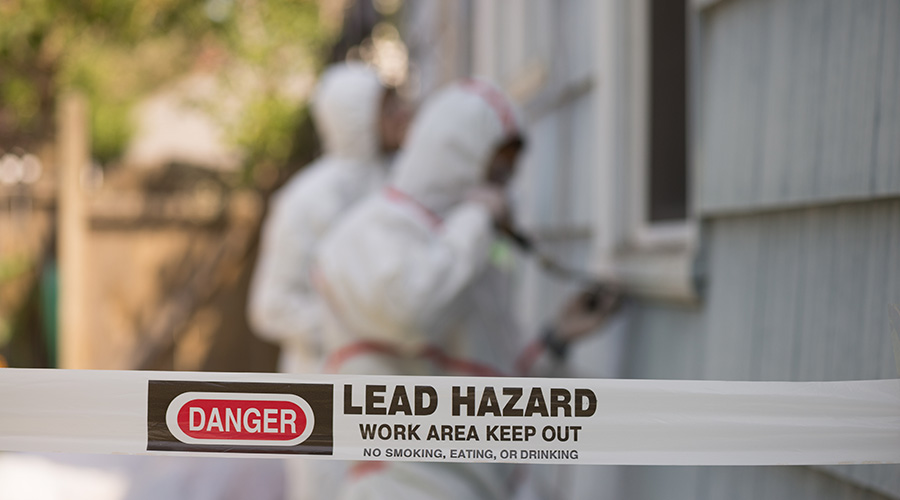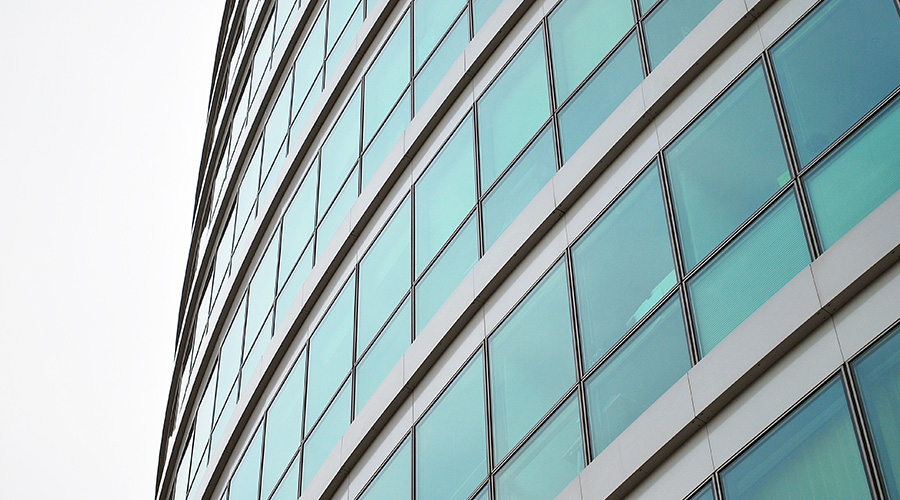Retuning Buildings To Improve Performance
Understanding the ins and outs of a building can help managers achieve operational goals.
By Laurie A. Gilmer, P.E.
OTHER PARTS OF THIS ARTICLEPt. 1: This Page
Buildings have personality. I read that recently when I was reviewing information about building re-tuning. I’ve always thought of buildings as living things with their various complex systems that play host to our daily activities.
But a personality? It’s an unusual term, but if you think about a personality being a unique combination of characteristics that makes something distinct, it makes sense. Buildings have certain sounds they make, ways they work well and ways they don’t. To get most out of their facilities, managers need to understand their facilities’ personality. To do that, we must be imbued in their inner workings. It also follows that we assume there is room for improvement. How do you know?
We have a lot of room for improvement, based on data from the U.S. Department of Energy (DOE). The DOE indicates commercial and institutional buildings account for 20 percent of the nation’s annual energy consumption. Of that 20 percent, an estimated 10-30 percent is wasted.
These figures are hardly new in their scale. Just eight to ten years ago, we were talking about very similar levels of opportunity. It was a time when commissioning, energy audits, utility sponsored assessments, and no-upfront-cost-to-you energy retrofit project packages were popular. In the world of existing buildings, we invested a lot of time and money to make our facilities more efficient.
Did that strategy work? Between 2003 and 2012, the average total energy use per square-foot in buildings decreased from 91,000 Btu (kBtu) per square-foot to 80 kBtu per square-foot, according to the 2012 Commercial Buildings Energy Consumption Survey. That sounds great until you read that the average electricity use per square-foot remained almost the same. Natural gas use decreased, a fact attributed to federal equipment standards and a warmer-than-average winter in 2012. So while some locations benefited, overall performance in the commercial sector did not. We have room to improve.
Tuning tactics
Have our attempts so far been ineffective? I don’t think so. I think it presents a different question: How do you inspire change that leads to sustainable performance improvement? While the overall answer is complex, managers can do simple things immediately to re-tune their facilities — without a high capital outlay.
Understand goals and drivers.
What is most important in your building and to your organization, and why? I am sometimes surprised how little attention managers pay to these questions. It’s as if we believe if we stop to think about the big picture, we will lose precious time in tending to the daily emergencies. So we jump from one burning issue to the next. But if we do spend time understanding things we want to achieve — goals — and the reason it is important to our organization — drivers — we can prioritize our responses to daily activities and long-range needs.
I once worked with a team that needed to reduce energy use in its building. When we talked about the way they measured success, it became clear they cared about reducing emissions, not costs. It wasn’t that they did not care about money. Money just wasn’t a key driver for high level decision making. When this group set their goals, they built them around consumption and emission reductions. Their plans then targeted evaluation of systems that would give them the biggest impact to meet these goals.
Another group I worked with also wanted to reduce consumption but focused completely on cost. For them, that meant understanding the big picture of cost, as well as consumption. It turned out that most of their energy use was in natural gas, the cost of electricity actually accounted for most of their spending. Accordingly, goals were set around reducing electricity consumption, focusing on low- and no-cost actions.
These two examples are straightforward. Getting to this level of simplicity of articulation took quite a bit of work, but the simplicity has been one of the best, if not the best, tools for engaging in focused support and action at all levels of the facilities team. It also serves as the basic framework for a measurement and monitoring strategy.
Understand the building.
This seems like an obvious step, but it is often overlooked or unappreciated. There are two components that need to be understood: overall facility performance and specific system performance.
To understand overall facility performance — the best place to start — benchmark your building against similar buildings. How efficient is your building for your climate region, use type, and activities? Energy Star Portfolio Manager — https://goo.gl/cJbNMj — is particularly helpful here.
What are the operational and physical characteristics of the building? The building re-tuning approach is particularly helpful here. One note on the re-tuning philosophy: Pacific Northwest National Laboratory developed the approach to improving building energy efficiency. Training focuses on understanding the building and its systems, identifying opportunities for savings through visual observation and system monitoring, and making small changes over time that are tested to compare expected results against reality.
Online training is available at no cost. Rather than encouraging a one-time list of opportunities for future implementation, it focuses on teaching trainees ways to understand building operations, read trends, make small changes, and monitor results.
To understand operational characteristics, ask:
• When should your building be running?
• What are the systems setpoints?
• What cannot be compromised, and why?
Be careful of the impact of occupant expectations. I’ve worked in facilities that conditioned literally hundreds of thousands of square-feet over the weekend, even though the building had only a handful of occupants present. To be sure, critical areas required conditioned air. That was not in question and, in fact, was well understood by facilities personnel. It was the unoccupied office wings where conditioned air was provided 24/7, regardless of occupancy, that presented a conservation opportunity. In this facility, the reason for conditioned air at all hours had more to do with a desire to please and not have complaints.
If the organizational driver was to maintain occupant happiness and minimize complaints, mission accomplished. But the organizational driver was to reduce consumption. Hello, opportunity. The general wisdom for managing the nexus of energy management and building operations is this: If it doesn’t need to be on, turn it off. Use setbacks where appropriate.
In addition to understanding a building’s operational characteristics, managers also need to understand the physical characteristics. Look at the orientation of the building, the locations of windows, whether or not windows are operable, the rough percentage of wall vs. window area of each major building face, the way people enter and exit the building, and the way outside air is provided. These observations offer insights for improvements that might not seem obvious immediately.
Listen to the building.
Trended data is particularly helpful here. Start at the high level first. How much energy are you using overall monthly throughout the course of a year? How does it break down in terms of type — electricity, natural gas, etc.? How does cost break down, assuming this is important to monitor? How does consumption compare to other similar buildings?
Put that information together with the operational and physical observations. Does anything stand out? Mechanical and lighting systems use the most energy in many buildings, and managers traditionally focus on these systems when pursuing energy savings. That approach is not wrong, but building re-tuning training provides a slightly shifted perspective. It tells you that most opportunities for improvement are typically in air moving equipment — air-handling units — central plant systems, zone systems — variable-air-volume boxes — the building envelope, and system scheduling.
Monitor systems for opportunities.
This is actually the place many of us would like to start. Building automation systems and energy management systems provide tremendous capability to monitor specific system performance, and it is tempting to dive into the data head first. But without the proper foundation of setting goals, establishing expectations, understanding baseline performance, and appreciating potential impacts, managers can get lost in the weeds and miss the larger context.
Earlier, I said that buildings have personalities. If you have followed this process, chances are you do not have just a feel for the building, but an articulable understanding of the building’s personality. You know what you should see, so when you set up and monitor specific system trends to check the performance of specific building systems, you can tell more easily which systems and components are and are not operating as they should.
Getting to know our buildings and embedding ourselves in their personalities is essential for improving building and system performance. Only by doing so can managers identify opportunities for improvement. With an approach that moves from a high-level understanding of organizational needs down through the details of systems, managers are equipped to act on behalf of buildings and the occupants they serve.
Laurie Gilmer is vice president and chief operating officer of Facility Engineering Associates. Gilmer co-authored the International Facility Management Association (IFMA) second manual in the Sustainability How-To-Guide series, EPA’s Energy Star Portfolio Manager. She serves on IFMA’s Board of Directors and on the Northwest Energy Efficiency Council’s Building Operator Certification program advisory committee and the National Visiting Committee of Building Efficiency for a Sustainable Tomorrow (BEST) Center.
Related Topics:












